Day 209: Scoring for sound
36yearsago.com
Vienna 1971—A Student Journal
A year of music, study, travel, sightseeing &
friends.
Day
209 — Scoring for sound
27-February-1972
(Sonntag–Sun.)
TRANSCRIPT
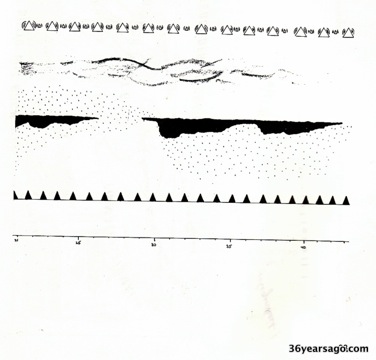
Practiced—fair amount of
time and then spent rest writing letters and
beginning to start the “partiture” [score] for the
composition.
REFLECTIONS
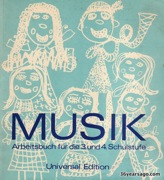
A score for sound. A musical
score normally shows musical notation on musical
manuscript paper—notes on a musical staff. As my
composition is being created from the sound of a
breaking glass, I cannot use musical notes on a
musical staff. Insead, I am creating my score by
depicting sound elements with graphics on a timeline.
Pictured below are some of my graphic sketches and
timings for thunder.
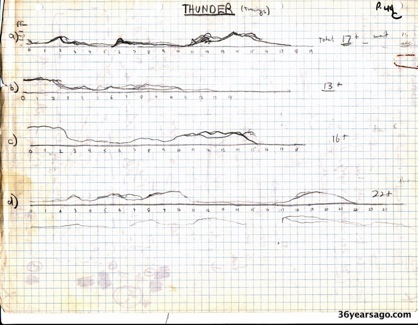
The
opening picture shows a part of the score published
in the Universal Edition music education book. You
can see the repetition of the sound elements.
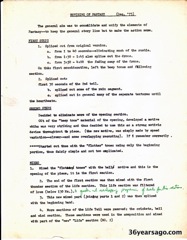
Lost tapes. For many years, I kept several large 15” reels of 1/4” magnetic tape that were the actual original composition and the educational examples mentioned above. I could see the many, many splices in the tape reel. Recently, I have been trying to find these tapes and have not been successful. They may be lost. What a shame. It would have been so great to digitize these examples, OCR scan my typed notes, and see if I could document the process of how I created the composition. I feel a bit sad.
I think I will try to write Prof. Kaufmann, or the Insitute of Electroacoustic Music, to see if there is an archive of the composition and if they can be recovered.
Yet, it was an exciting project to experiment, learn, and present in concert.
Picture 1 - Part of the examples list on how the original sound was manipulated.
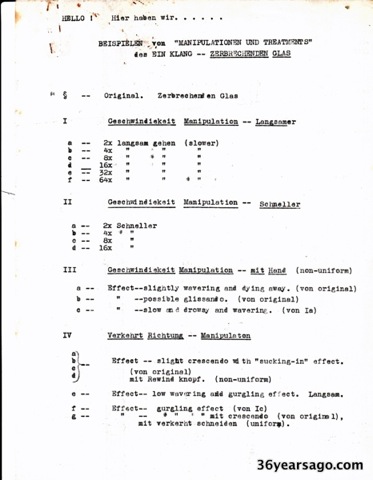
Picture
2 -
Explanations of the sound manipulations.
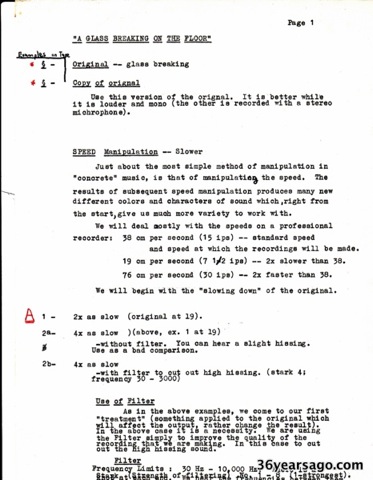
Picture
3 - A
colored-pencil rendition of part of the score
of Fantasy
on Broken Glass.
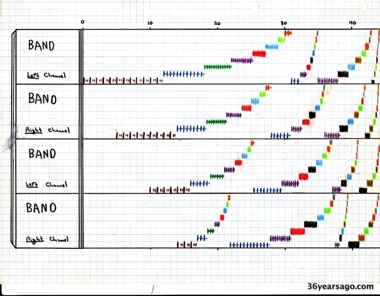
John
- - - -